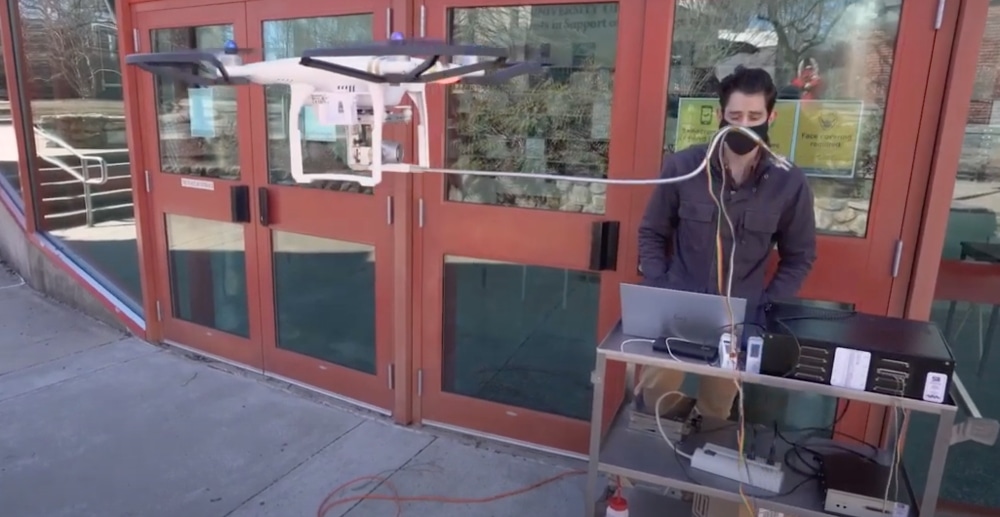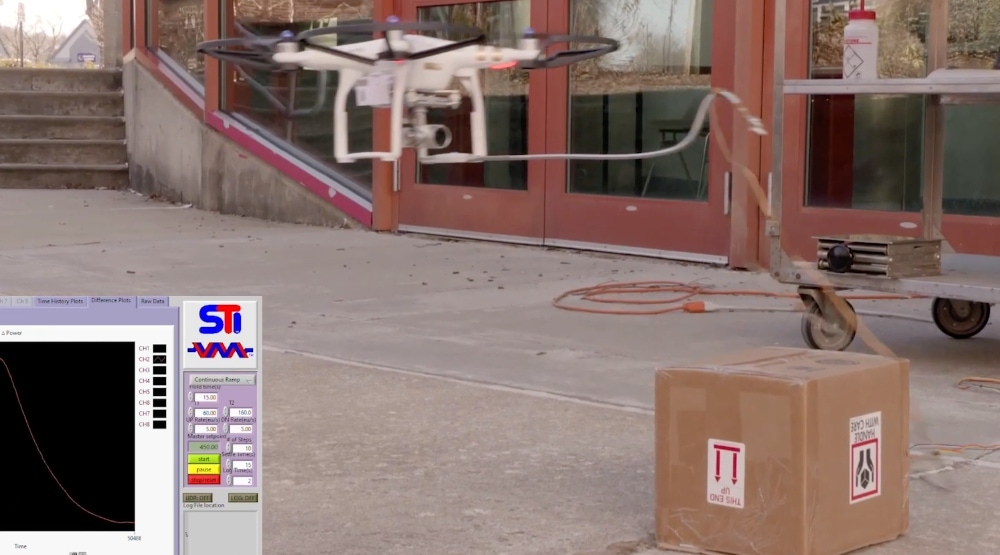Drones with “Digital Dog Nose” Sensors Could Replace Actual Dogs for Bomb Detection
BY Zacc Dukowitz
26 May 2021A drone being developed by researchers at the University of Rhode Island has the potential to replace dogs for detecting bombs.
The drone itself is just an ordinary quadcopter—a DJI Phantom 3, to be exact.
What makes the drone unique is a special sensor attached to it that allows the drone to “smell” different substances, such as the materials used in explosives.

A picture of the digital dog nose sensor
Leading the effort to create this drone-compatible sensor is Professor Otto Gregory of the University of Rhode Island’s College of Engineering. He’s been working on the smelling sensor—which he calls a digital dog nose—for 15 years, and it can now identify the particles associated with various explosive materials.
The digital dog nose sensor is lightweight, so it doesn’t significantly impact the battery life of the drone.
A key to keeping the sensor small has been to find lightweight batteries for it. The batteries currently used are incredibly low-mass lithium ones, which are as thin as a piece of paper.
An impressive aspect of the digital dog nose sensor is that it can pick up very small traces of smells, detecting them at a microscopic level.
This is potentially life-saving technology. We have detected things at the part-per-quadrillion level. That’s really single-molecule detection.
– Professor Otto Gregory, The University of Rhode Island’s College of Engineering
This high degree of sensitivity could be important for the usefulness of the sniffing drone, since the more sensitive it is, the more likely it is to detect the substances it’s looking for.
And in the case of detecting explosives, such a high level of accuracy could literally save lives.
Digital Smelling Technology and Drones
The digital dog nose project was originally funded by DARPA (Defense Advanced Research Projects Agency), which asked Gregory to focus on the detection of toxic gases that might be used in chemical weapons.
Since then the Department of Homeland Security also signed on as a funder, wanting the professor to create a solution for detecting bombs in crowded public places, like airplanes, trains, ports, or sports arenas.

But the digital dog nose technology isn’t just limited to sniffing out bombs or toxic gases.
Peter Ricci, a doctoral student working with Gregory at the University of Rhode Island, says that there is a huge potential for developing new ways to use the digital smelling technology.
Whether you’re in an airport flying around with a smaller drone, or in a battle zone where there’s a larger explosives threat where they could be flown in on a UAV-sized drone…[this is just] the start of the process of taking sensors we’ve been developing for so long and putting them in an application where they can be useful.
– Peter Ricci, Chemical Engineering Doctoral Student at the University of Rhode Island’s College of Engineering
Here are some other ways the digital dog nose could be used:
- Monitoring wounds. When someone has an open wound, such as the kind of wound a soldier might get from shrapnel, hydrogen peroxide generated by the human body can indicate how well or poorly antibiotics are working to heal the wound. The digital dog nose can actually smell peroxide coming out of the wound at the part-per-billion level, and could help monitor how well or poorly a wound is healing.
- Finding illegal drugs. The U.S. Coast Guard is interested in using the digital dog nose to find illegal drugs on ships trying to enter the U.S. According to Gregory, the U.S. Coast Guard has shown an interest in using the technology to “sniff out” illegal drugs being smuggled into the United State aboard ships.
- Detecting gas leaks. Companies working in Oil & Gas are interested in using drone smelling technology to detect methane so they can look for leaks in major pipelines that may not be visible to the naked eye.
- Detecting viruses. Viruses also have a smell to them, and the sensor could help detect them as well, presenting another scenario where the drone Gregory is developing could be used to keep people safe and healthy.
- Detecting IEDs (Improvised Explosive Devices). Of course, this kind of detection is the same as that proposed for bomb detection in crowded public places, but it is a wartime application as opposed to a civilian one.
Interested in learning how the digital dog nose sensor works?
This video featuring Dr. Gregory and Peter Ricci does a good job providing an overview:
Can you think of other ways the digital dog nose drone could be used? Share your thoughts in this thread on the UAV Coach community forum.


